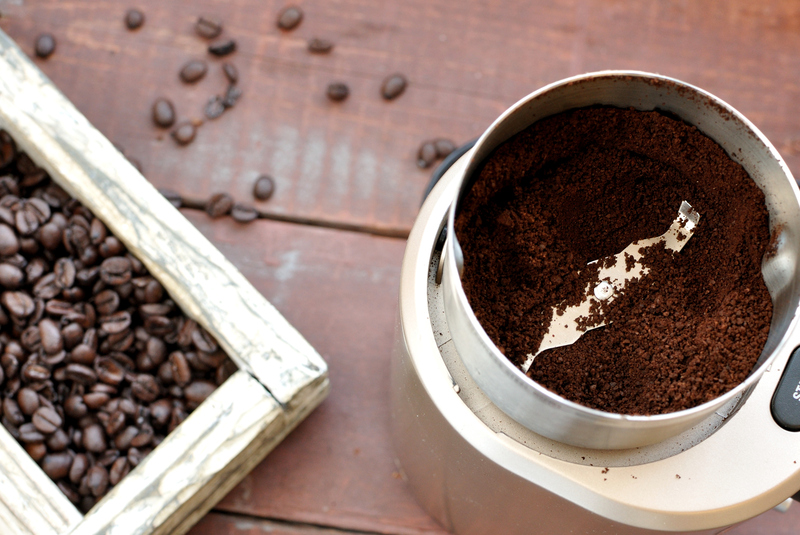Proven Techniques to Say Goodbye to Musty Odors
Posted on 02/07/2025
Proven Techniques to Say Goodbye to Musty Odors
Musty odors can creep into our homes silently, signaling the presence of excess moisture, mold, or poor ventilation. These unpleasant smells not only diminish the comfort of our living spaces but can also impact our health, especially for those sensitive to allergens. If you're struggling to eliminate musty odors once and for all, you've come to the right place! In this comprehensive guide, we'll reveal powerful, proven methods to banish musty smells and keep your home fresh and inviting.

Understanding the Root Causes of Musty Smells
Before you can effectively eliminate musty odors, it's essential to understand what causes them in the first place. Recognizing and addressing the underlying sources of these unpleasant scents is the most important step in achieving long-lasting results.
Common Causes of Musty Odors
- Excess Moisture: High humidity, leaks, and poor ventilation contribute to dampness, creating the perfect environment for musty smells.
- Mold and Mildew Growth: Mold spores thrive in damp, dark areas, releasing musty odors as they spread.
- Poor Airflow: Stagnant air in closed rooms, basements, or closets exacerbates odor issues.
- Neglected Cleaning: Accumulation of dust, dirt, or organic material in hidden corners can begin to smell musty over time.
Step 1: Identify and Remove the Source of Odor
To permanently get rid of musty smells, first locate their origin. Use your nose to trace the strongest scent, paying attention to:
- Basements, crawl spaces, and attics
- Closets and wardrobes
- Carpeted areas or rugs
- Bathrooms and laundry rooms
- Behind furniture and appliances
Once identified, remove any water-damaged materials, visible mold growth, or forgotten items (like damp towels or shoes) harboring odors. If you discover extensive mold, consider seeking professional help to ensure safe and thorough remediation.
Important:
- Wear gloves and a mask when cleaning areas with visible mold to avoid breathing in spores.
- Safely discard items beyond salvaging.
Step 2: Dry Out the Affected Areas
Moisture control is critical for eliminating and preventing musty odors. Here are practical ways to reduce dampness:
Ventilation Techniques
- Open windows and doors: Let fresh air circulate to disperse stagnant, musty air.
- Use exhaust fans: Especially in bathrooms, kitchens, and laundry rooms.
- Install vents: In basements and crawl spaces to improve airflow and lower humidity.
Use of Dehumidifiers
Dehumidifiers are a highly effective way to remove excess moisture from the air. Run a unit in damp areas or wherever musty odors are persistent. Aim for a relative humidity level below 60% to prevent mold growth and odor development.
Absorb Moisture with Desiccants
- Silica gel packs
- Activated charcoal bags
- Baking soda bowls (replace weekly)
- Calcium chloride crystals (for heavy-duty absorption)
Place these around affected areas like closets, cabinets, and below sinks.
Step 3: Deep Clean and Disinfect Surfaces
After eliminating moisture and the physical source of odors, conduct a thorough cleaning regimen using odor-busting methods and non-toxic solutions.
Cleaning Hard Surfaces
- White vinegar: Mix equal parts vinegar and water, then wipe down walls, floors, and tiles. Vinegar neutralizes odors and inhibits mold growth.
- Hydrogen peroxide: For stubborn mold, spray 3% hydrogen peroxide directly onto the area. Let it sit for 10 minutes, then wipe clean.
- Baking soda paste: Scrub problem spots with a mix of baking soda and water for gentle abrasive action and odor absorption.
- Commercial mold cleaners: For severe cases, especially in basements and bathrooms.
Refreshing Carpets and Upholstery
- Sprinkle baking soda liberally over rugs, carpets, and upholstered furniture. Leave overnight, then vacuum thoroughly.
- Use a steam cleaner with an anti-odor solution for deep embedded smells.
- If necessary, hire a professional carpet cleaning service for stubborn or extensive musty odors.
Washing Fabrics and Soft Furnishings
- Launder curtains, cushion covers, tablecloths, and throws on a hot cycle with vinegar or baking soda.
- Dry items thoroughly in sunlight for natural odor removal and sanitization.
- Consider dry cleaning for sensitive fabrics that can't be machine washed.
Step 4: Harness Natural Odor Neutralizers
Nature provides several tools to help eliminate musty smells and keep your indoor air fresh without harsh chemicals.
Essential Oils
- Use tea tree oil, lavender, eucalyptus, or lemongrass oils in a diffuser to mask and neutralize musty odors.
- Mix a few drops with water in a spray bottle and spritz throughout the house.
Activated Charcoal
- Activated charcoal naturally absorbs and traps airborne odors and excess moisture.
- Place bags in closets, basements, or problem spots for long-term freshness.
Baking Soda and Vinegar
- Baking soda: An excellent, gentle odor absorber for refrigerators, shoes, and small spaces.
- Vinegar: A bowl of vinegar left overnight in a musty room will help neutralize the air.
Step 5: Improve Home Ventilation and Air Quality
Sustainable, long-term fresher air requires improved ventilation. Consider these steps:
Regular Window Ventilation
- Open windows for at least 15-30 minutes daily, even in winter when possible.
- Use window fans to promote cross-ventilation and expel stale air.
Upgrade HVAC Systems
- Install a whole-home air exchange or ERV (Energy Recovery Ventilator) system to keep air moving and reduce mustiness.
- Change HVAC filters regularly to prevent musty-smelling dust accumulation.
Use Air Purifiers
- HEPA and carbon air purifiers remove mold spores, allergens, and musty odors from indoor environments.
Step 6: Prevent Future Musty Smells
Consistency is key! Prevent musty odors from returning by adopting these maintenance strategies:
Keep Moisture at Bay
- Fix plumbing leaks and roof issues promptly.
- Use waterproof paint or coatings in basements and bathrooms.
- Store belongings in airtight, moisture-proof containers.
- Ensure gutters and downspouts direct water away from your home's foundation.
Maintain Cleanliness
- Vacuum and dust regularly to prevent buildup of organic material and allergens.
- Deep clean carpets, upholstery, and drapery at least twice annually.
- Avoid storing damp items in closets, garages, or under beds.
Inspect for Warning Signs
- Look for peeling paint, discolored drywall, or condensation -- all signs of excess moisture.
- Regularly inspect hidden areas (under sinks, behind appliances) for leaks or mildew.

Natural Remedies for Persistent Musty Odors
If after thorough cleaning pesky musty odors linger, try these advanced odor removal tactics:
- Ozone Generators: Can break down odor-causing compounds, but should be used with caution and professional guidance.
- White Vinegar Spray: Mist on hard-to-clean surfaces like walls, baseboards, or wooden beams, then wipe away after an hour.
- Lemon Peel: Place fresh lemon peels in bowls for a light, fresh aroma and natural deodorization.
- Coffee Grounds: Set out bowls of fresh coffee grounds to neutralize odors in small rooms or storage areas.
Musty Odor FAQs
- How do I stop musty smells from returning? Maintain low indoor humidity, regularly clean prone areas, and fix leaks swiftly.
- Is musty smell dangerous? Prolonged exposure can trigger allergies and respiratory issues, especially if mold is present. Always address the cause promptly.
- Can air fresheners eliminate musty odors? Air fresheners only mask the scent temporarily. For lasting results, tackle both odor source and excess moisture.
Conclusion: Enjoy a Fresh, Odor-Free Home
Banishing musty odors from your home is entirely achievable with the right approach. By identifying the source, controlling moisture, deep cleaning, using natural odor removers, and improving ventilation, you can create a healthier, fresh-smelling living environment.
Remember, the key to eliminating musty odors permanently is consistency and vigilance. Regularly inspect and maintain your home, and you'll enjoy freshness and comfort for years to come!



